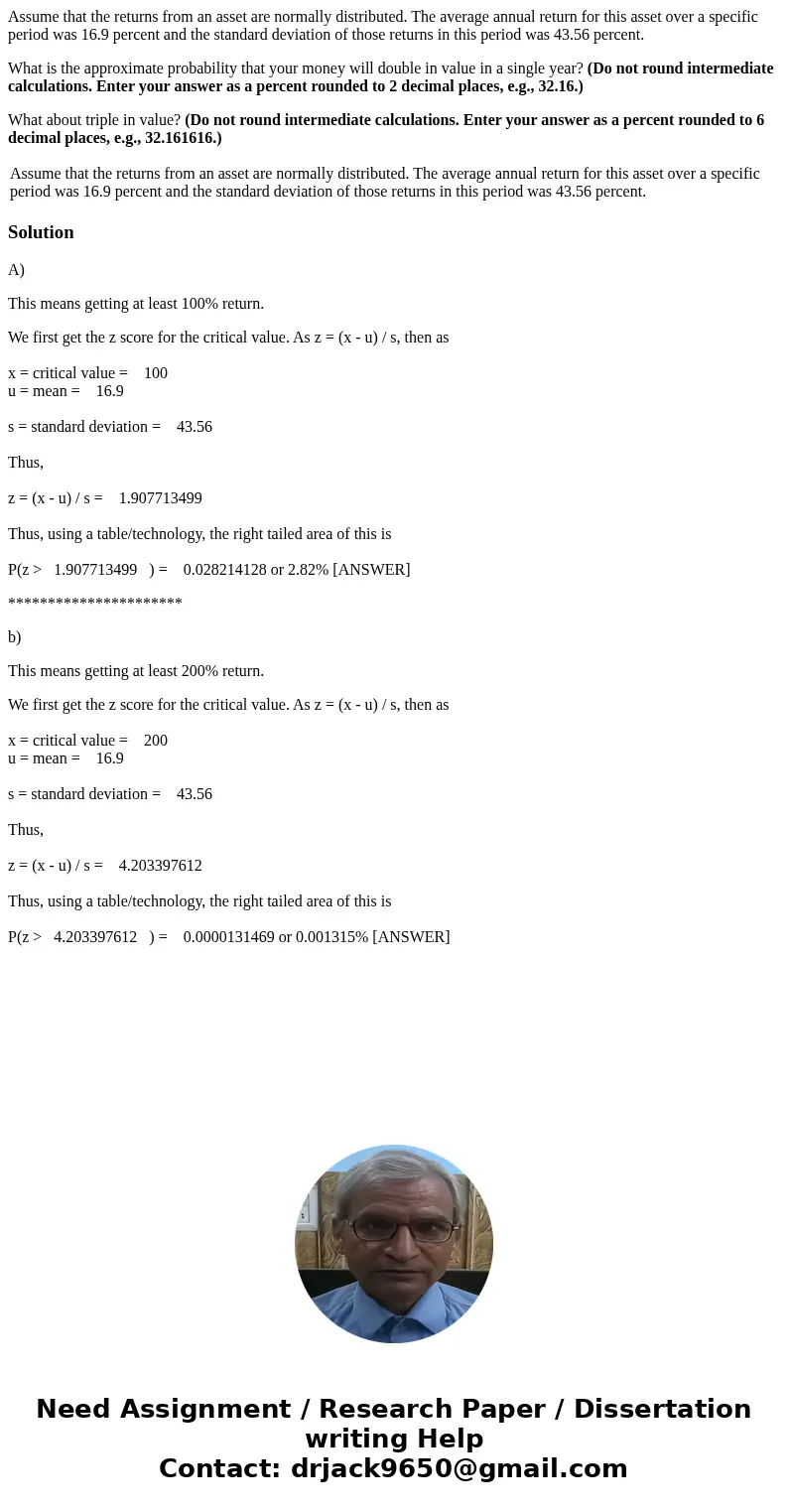Assume that the returns from an asset are normally distribut
Assume that the returns from an asset are normally distributed. The average annual return for this asset over a specific period was 16.9 percent and the standard deviation of those returns in this period was 43.56 percent.
What is the approximate probability that your money will double in value in a single year? (Do not round intermediate calculations. Enter your answer as a percent rounded to 2 decimal places, e.g., 32.16.)
What about triple in value? (Do not round intermediate calculations. Enter your answer as a percent rounded to 6 decimal places, e.g., 32.161616.)
| Assume that the returns from an asset are normally distributed. The average annual return for this asset over a specific period was 16.9 percent and the standard deviation of those returns in this period was 43.56 percent. |
Solution
A)
This means getting at least 100% return.
We first get the z score for the critical value. As z = (x - u) / s, then as
x = critical value = 100
u = mean = 16.9
s = standard deviation = 43.56
Thus,
z = (x - u) / s = 1.907713499
Thus, using a table/technology, the right tailed area of this is
P(z > 1.907713499 ) = 0.028214128 or 2.82% [ANSWER]
**********************
b)
This means getting at least 200% return.
We first get the z score for the critical value. As z = (x - u) / s, then as
x = critical value = 200
u = mean = 16.9
s = standard deviation = 43.56
Thus,
z = (x - u) / s = 4.203397612
Thus, using a table/technology, the right tailed area of this is
P(z > 4.203397612 ) = 0.0000131469 or 0.001315% [ANSWER]

 Homework Sourse
Homework Sourse